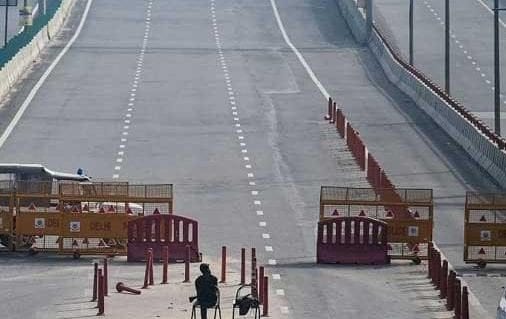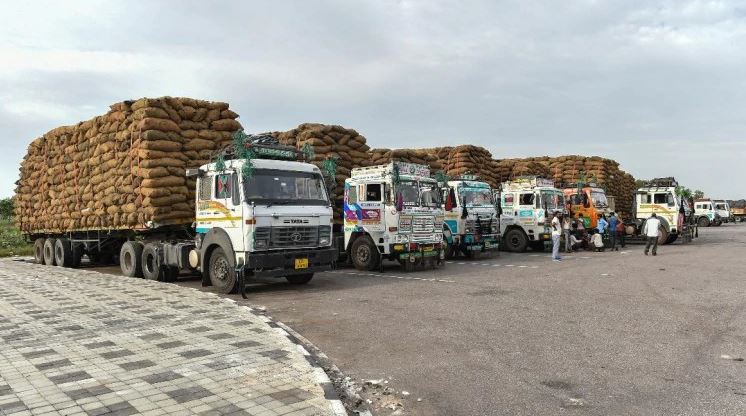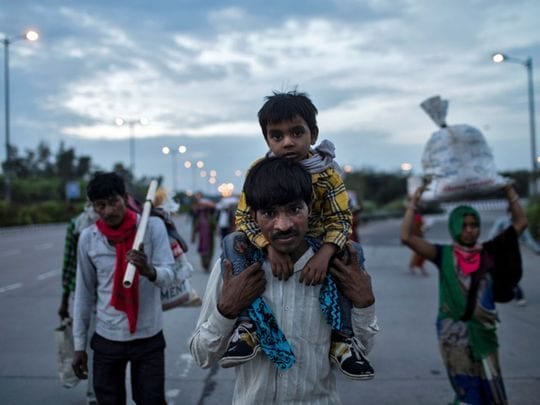
Day 10: Key lessons learnt from the COVID-19 lockdown
It’s Day 10 of the nationwide lockdown and about time for the central government to test the efficacy of the measure even as the number of COVID-19 cases has already crossed the 2,000 mark

It’s Day 10 of the nationwide lockdown and about time for the central government to test the efficacy of the measure even as the number of COVID-19 cases has already crossed the 2,000 mark.
The 500-odd cases that were reported from across the country when Prime Minister Narendra Modi announced the lockdown, effective March 25, have escalated to 2,301 (as per Union Health Ministry figures on April 3). The death toll has spiked from 10 to 56, while the number of patients who have been discharged so far is at 156.
Maharashtra with 335 cases, has topped the list of the 29 states and Union territories in reporting maximum COVID-19 cases. The ministry has also identified 20 existing and 22 potential hotspots of coronavirus across the country.
No more lockdowns, but staggered movement
At this juncture, the government has two more weeks to streamline medical services for future cases, identify hotspots, ramp up testing and localise infections as well as reboot trade and fill logistical gaps.
In a possible starter, Prime Minister Narendra Modi, in a video conference with chief ministers on Thursday, asked them to come up with a common exit strategy to ensure staggered movement of population when the lockdown period ends. Modi also emphasised that testing, tracing, isolation and quarantine should be the prime focus of state governments in the next few weeks.
Related news: Divine tragedy: Humanity as illness, COVID-19 as vaccine
In another video on Friday (April 3), he asked fellow Indians to turn off lights for nine minutes on Sunday (April 5) and light diyas to show their solidarity in the battle against coronavirus.
The Centre had recently quashed rumours of an extension of the lockdown beyond the prescribed 21 days.
Stating that an extension of the nationwide lockdown will not make a ‘big difference,’ eminent cardiac Surgeon Devi Prasad Shetty, told PTI that it will work if the lockdown is imposed in areas reporting high incidence.
India’s low testing rates
Until a vaccine is developed, scientists have vouched for increased testing and social distancing as two vital measures to curb the spread of the virus.
WHO head Tedros Adhanom Ghebreyesus recently said that all countries have to test all suspected cases to fight the pandemic.
India, however, has come under criticism for its lower testing rate.
According to latest ICMR data, only 35 people per million population are tested for COVID-19 in India. The figure is minute when compared to that of Italy (9,156), South Korea (8,184), the United States (3,469) and UK (2,271)
India until March 19, just four days before Modi announced the lockdown, was testing only symptomatic patients with an international travel history and those who had come in contact with laboratory confirmed cases of coronavirus and not ‘suspect cases.’
The government’s testing protocol, however, mandated that any hospitalised patient with pneumonia-like symptoms and whose condition cannot be attributed to any other case is a suspect.
Defending the government’s stance, Nivedita Gupta, senior scientists at ICMR, had told Indian Express that the decision was taken “not to exhaust…testing capacity in futile testing.”
The ICMR later on March 20 made testing mandatory for all hospitalised patients with pneumonia-like symptoms.
With borders and international travel closed, the government may now shift its focus towards testing symptomatic cases in COVID-19 hotspots and clusters. For instance, state governments are currently tracing and testing people who attended the Tablighi Jamaat meet in Delhi in early March, which of late has emerged as a COVID-19 cluster following the death of 10 participants. While close to 300 people are under observation, reports say 9,000 people linked to the Jamaat meet risk infection.
Stress on localising infection
Keeping such cases in mind and with the lockdown in place, meaning no arrival of international passengers, the government now plans to curb the spread of the disease and identify hotspots to localise the infection.
“Testing has to go hand in hand,” said Dr. Randeep Guleria, director of the All India Institute of Medical Sciences and a renowned pulmonologist, who is also a member of the high-level technical committee which formulates strategies for COVID-19 prevention and control, in an interview to Indian Express.
Related news: COVID-19: Reel-life apocalypses feel so real now
Dr. Guleria says, testing at the current stage should answer two questions: 1) where are hotspots developing, 2) is there significant community spread so that more steps towards more “regressive containment strategies” could be taken.
He says ensuring that the disease is localised to one area, will make it easier to manage it as it will be limited to that area, instead of spreading to other parts of the country.
80 per cent will contract, but recover
Dr. Guleria says that at least 80 per cent of Indians will contract COVID-19 in form of a mild illness and recover from it. His assertion resonates with the Centre’s plan to prioritise hospitalisation on the basis of severity of cases in future. According to reports, the government may soon ask patients with mild symptoms (low fever, cough, sore throat) to stay in home quarantine and allow hospitalisation of cases which need intensive care like oxygen supply, ventilators and constant monitoring.
While India is yet step into the third phase of COVID-19 i.e. the community transmission of the disease, Dr. Guleria says the phenomenon, can be delayed but not prevented.
The role of the government thus should be to prevent widespread community transmission in the initial phases of the disease to avoid a steep rise in cases, he says.
He says this phasing out process, will help achieve lower number of cases, avoid pressure on health staff and give more time for the scientific community to come up with better treatment strategies.
Supply logistics need attention
The lockdown, was described as ‘hurried’ and ‘poorly planned’ by most critics as sudden lockdown gave citizens barely a few hours to stock up on essentials or leave for their native places.
Even though the government had allowed movement of transport vehicles and goods trains carrying essential items despite curbs on other forms of communication, lack of clarity on classification of essential items affected the supply chain in many states. The message that people with essential services should be allowed to pass also didn’t trickle down to the lower rungs of administration.

According to an Economic Times report, enforcement authorities apart from shutting factories of essential and packaged food companies, also halted movement of trucks carrying both raw and finished goods.
Drivers faced hiccups while transporting goods such as chemicals used to clean hospitals, reagents used in diagnostic kits and protective gears. Many suppliers also pointed at police apathy during the supply of goods. Drivers in many cases refused to drive on highways in fear of police and abandoned trucks at the nearest parking points before going home, logistics start-up Mavyn’s Sachin Haritash told Business Line.
The Indian Council of Medical Research also complained of facing difficulties in moving regents for diagnostic kits to various locations from Delhi and Pune.
Taking stock of the matter, the Centre after a meeting of Logistics Committee for COVID-19 Relief Operations, announced on March 29 that all goods, both essential and non-essential can move across state borders without any hindrance. The ministry also clarified that groceries and hygiene products like sanitary napkins, hand washes and surface cleaners should be considered essential items.
Related news: World Bank approves USD 1 billion for India to fight COVID-19
The Union commerce ministry also gave exporters the green signal to ship their goods without the mandatory Certificate of Origin (COO) from designated bodies due to lockdown, in an evident step to help them clear manufactured goods.
The government has also stated that it is open to accepting goods from free trade agreement (FTA) partner countries without COOs, if the later place a request.
Woes of food aggregators, grocers
While the government had ordered take away facility at restaurants to be open, food aggregators like Swiggy and Zomato had complained of delivery boys falling prey to vigilantism and harassment by local authorities. The closure of restaurants also handicapped these food delivery companies in the initial days of the lockdown. The food delivery systems now operate during government-mandated timings.
A similar predicament was faced by supermarket apps like Grofers, BigBasket and Flipkart which had temporarily suspended services, but resumed it after being assured by the government.
Economic ramification
The Confederation of All India Traders (CAIT) on April 1, pegged losses incurred by the retail sector, comprising 70 million small, medium and big traders, in the past 15 days at 30 billion USD. The sector employs at least 450 million people and does a monthly business of 70 billion USD.
Economists say the loss will grill a dent in the already-reeling economy.
CAIT national president B.C. Bhartia and general secretary Praveen Khandelwal have said that even if global economies and other sectors of Indian economy recover from the jolt, Indian traders will “pay a high price” of the lockdown whose ramifications will last longer than expected.
The traders’ body which said Centre’s recent deferment of EMIs without waiving off interest may be of little help, has urged the government to effect tax concessions, smooth access to credit, GST write-offs, relaxation and reimbursements for wages among other demands.
Indian exporters are facing a similar plight.
Related news: The world is staring at depression, though only for a short period
Export industry representatives during a recent interaction with Union commerce and industry minister Piyush Goyal said that Indian product including pharmaceuticals face the threat of losing their market to China, which has resumed production.
The members have urged the government to allow them to start production with at least 50 per cent manpower keeping in mind social distancing norms. The exporters citing liquidity crunch have also urged the government to provide them financial sops to pay wages and exempt the industry from statutory payments like ESI for the time being among others.
The government is yet to respond to the requests.
Harsh reality
One of the worst victims of the lockdown have been 470 million migrant workers, thousands of whom in a mass exodus started a walk to their native places, knowing that there wouldn’t be any income, food to eat or rent to pay in the coming days.
Some died, some after heavy backlash were ushered into state government-provided accommodations, while some are still stranded on roads, railway stations and bus stands. Many of them were ferried home in special buses after they resorted to protest.

The Uttar Pradesh government deployed 1,500 buses to take migrant workers who had returned from Delhi and Bihar to their native districts after thousands of workers amassed at the Laal Kuan on March 29 demanding to be sent home. In a similar step, around 2,437 labourers working in various places of Karnataka were sent home in different north Indian states in 60 KSRTC buses.
The migration which carried the threat of mass infection, was halted after the Centre ordered state governments to seal their borders.
On March 27, Finance Minister Nirmala Sitharaman, had announced a ₹1.7 lakh crore relief package for the poor. The package is meant to benefit around 800 million people who will get free cereal and cooking gas besides direct cash transfer for three months.
Reports say, the Centre may dish out more sops as the days progress, but only the completion of the lockdown will give a progress report on how India is placed.


